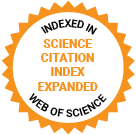Journal of Medical Internet Research
The leading peer-reviewed journal for digital medicine and health and health care in the internet age.
Editor-in-Chief:
Gunther Eysenbach, MD, MPH, FACMI, Founding Editor and Publisher; Adjunct Professor, School of Health Information Science, University of Victoria, Canada
Impact Factor 6.0 CiteScore 11.7
Recent Articles


Digital health technologies—including mobile applications, telemedicine platforms, AI, and eHealth tools—are transforming healthcare delivery by enhancing access, personalization, and efficiency. However, traditional Technology Readiness Levels (TRLs), while widely used to assess technological maturity, do not explicitly account for patient involvement—an essential factor in usability, acceptability, and real-world effectiveness.

Obesity affects approximately 40% of adults and 15–20% of children and adolescents in the U.S, and poses significant economic and psychosocial burdens. Currently, patient responses to any single anti-obesity medication (AOM) vary significantly, making obesity deep phenotyping and associated precision medicine important targets of investigation.

The heightened HIV vulnerability associated with men who have sex with men (MSM) who find sex online in Western and East Asian countries may pose similar concerns for MSM in Southeast Asia. However, this line of research is underexamined among Southeast Asian MSM, especially in Southeast Asian cities with a high HIV prevalence among young MSM, such as Ho Chi Minh City, Vietnam.

Mental health systems worldwide face unprecedented strain due to rising psychological distress, limited access to care, and an insufficient number of trained professionals. Even in high-income countries, the ratio of patients to health care providers remains inadequate to address demand. Emerging technologies such as artificial intelligence (AI) and extended reality (XR) are being explored to improve access, engagement, and scalability of mental health interventions. When integrated into immersive metaverse environments, these technologies offer the potential to deliver personalized and emotionally responsive mental health care.

The development of AI systems capable of independent diagnosis offers a promising solution for optimizing medical resource allocation, especially as their diagnostic accuracy can exceed that of some primary medical staff. However, despite these advancements, many patients exhibit hesitancy towards accepting AI technology, particularly for autonomous diagnostic roles. The mechanisms through which the information quality presented by AI doctors influences patients’ intention to adopt them for independent diagnosis remain unclear.

While research on the efficacy of digital health applications is progressing, health economic evaluations remain limited but are urgently needed to guide reimbursement and coverage decisions. Existing health policy frameworks frequently overlook cost-effectiveness considerations, and many studies presuppose cost savings without sufficient empirical validation. Although previous reviews have assessed digital health interventions more broadly, none has specifically focused on the cost-effectiveness of those intended for independent patient use.

Suicide was the second leading cause of death for youth between the ages 10 and 24 in 2023, necessitating improved risk identification to better identify those in need of support. While machine learning (ML) applied to electronic health records shows promise in improving risk identification, further research on the perspectives of these tools is needed to better inform implementation strategies.

University students frequently face mental health challenges due to academic pressures, lifestyle changes, and developmental factors. Digital interventions, such as Doing What Matters in Times of Stress (DWM), a psychosocial e-mental health intervention developed by World Health Organization, offer scalable approaches to address these issues. These data emerging from the international literature provide the framework for the CAMPUS study aimed at support the mental health well-being of students attending the University of Verona.

The significant association between blood pressure (BP) in children and young adulthood and risks of cardiovascular diseases in adulthood highlights the critical need for early BP control. While lifestyle modifications like increased physical exercise have proven effective, traditional exercise forms always suffer from low motivation and adherence. Active video games (AVGs), combining exercise with engaging gameplay, may present a promising alternative for managing BP in children and young adults.

The global rise in the prevalence of diabetes significantly impacts the quality of life of both patients and their families. Despite advances in diabetes care, numerous challenges remain in its management. In recent years, digital tools have been increasingly integrated into diabetes care, demonstrating some positive outcomes. However, the long-term effectiveness and associated challenges of these tools in diabetes management remain areas for future research.
Preprints Open for Peer-Review
Open Peer Review Period:
-
Open Peer Review Period:
-
Open Peer Review Period:
-
Open Peer Review Period:
-

















